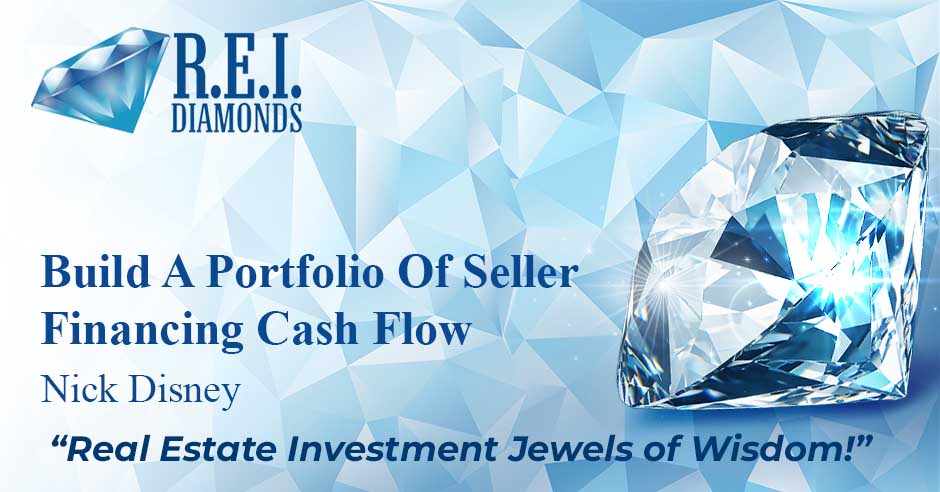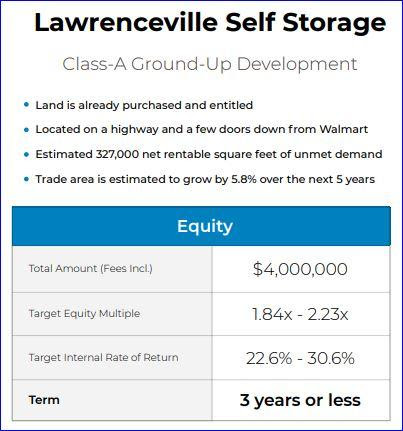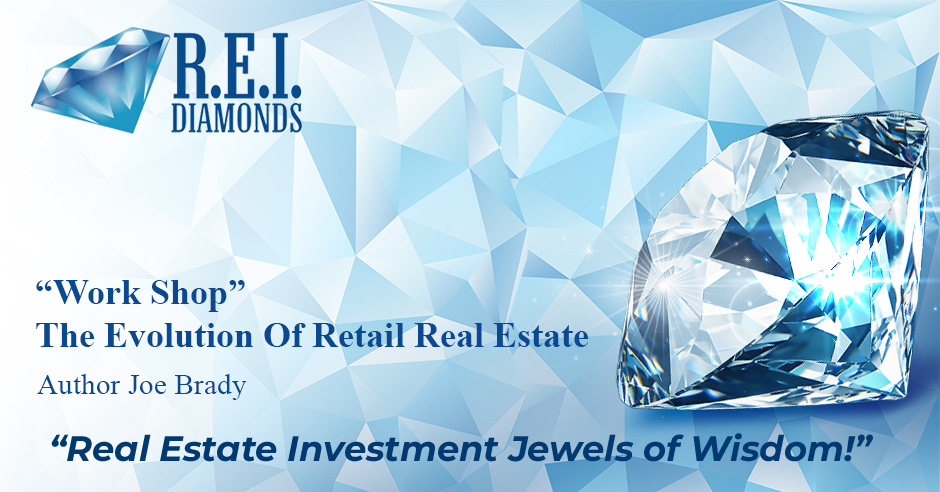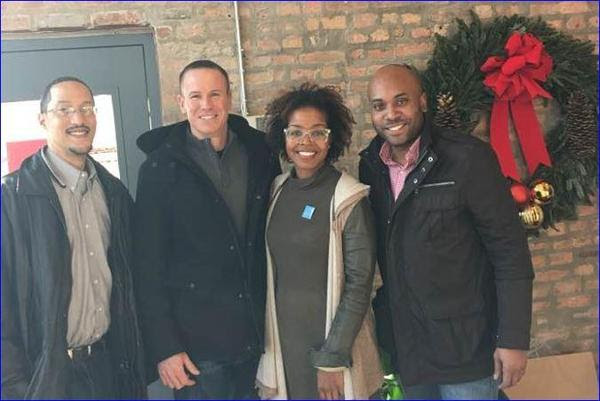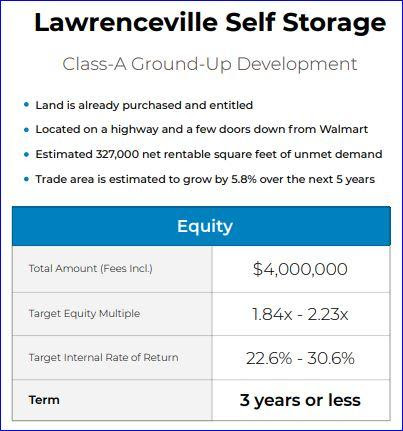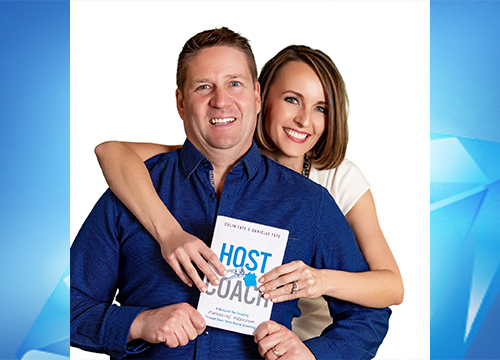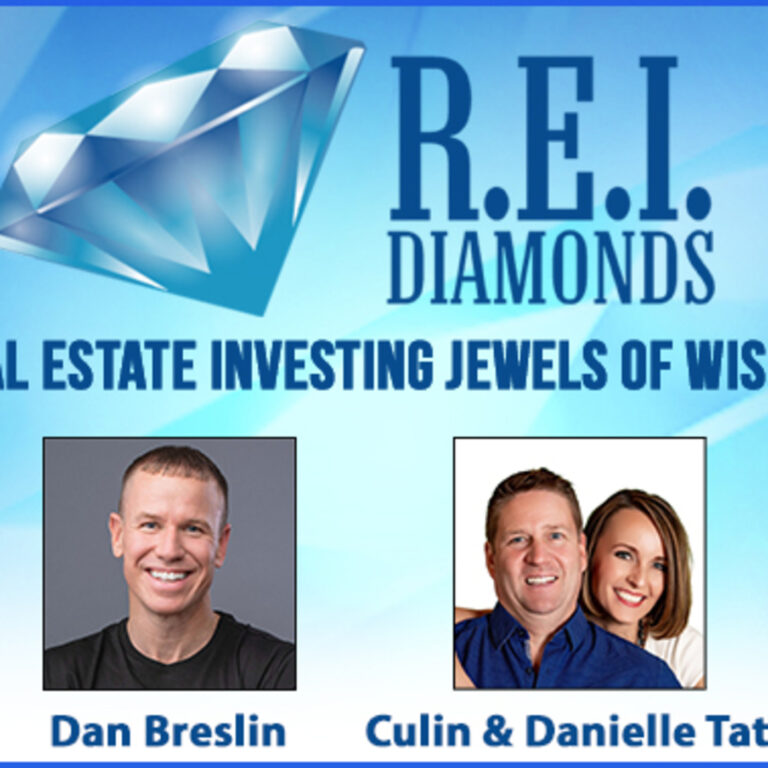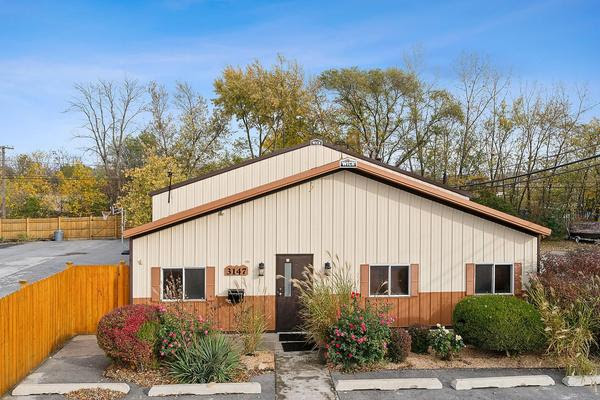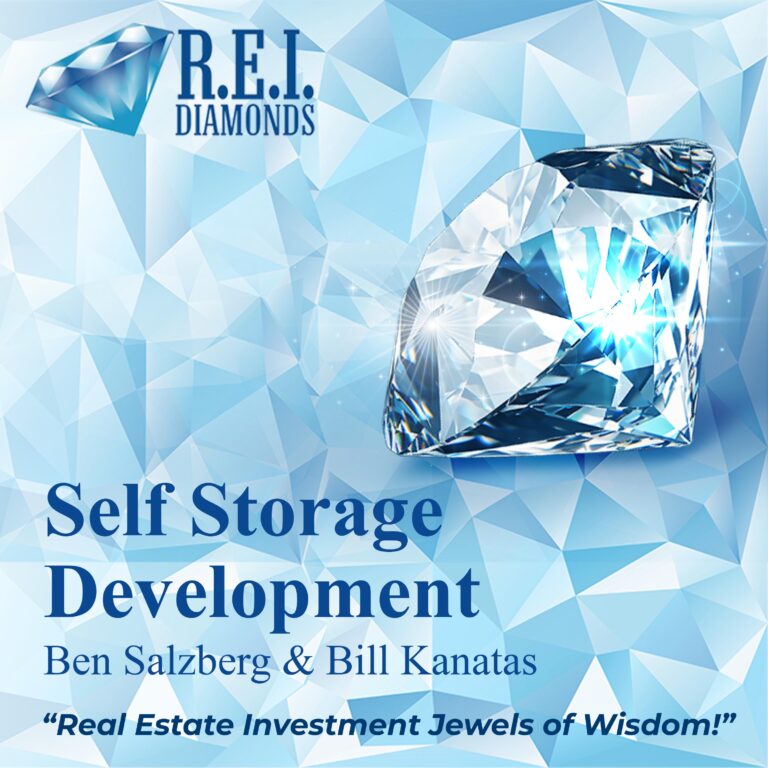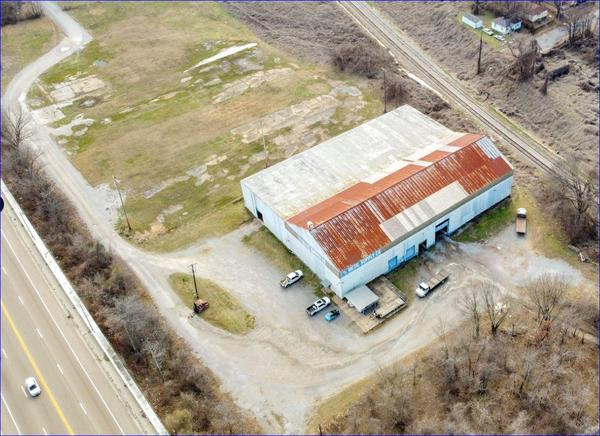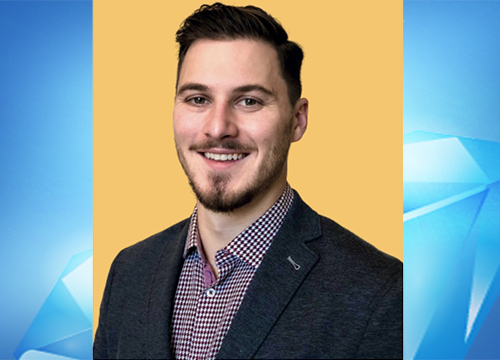Guest: Nick Disney is the founder of Sell My San Antonio House. His company specializes in flipping houses to owner occupants using seller financing.
Big Idea: Instead of selling conventionally using bank financing and real estate agents, Nick sells directly to his owner-occupant buyers and provides seller financing. These 10%+ interest-bearing notes are then sold off to investors who enjoy 30 years of payments, receiving 3.4 times their original investment.
This episode is also sponsored by Lending Home. Lending Home offers reliable & low-cost fix & flip loans with interest rates as low as 9.25%. Buy & hold loans offered even lower. Get a FREE iPad when you close your first deal by registering here now.
Resources mentioned in this episode:
View the episode description & transcript here:
Build a Portfolio of Seller Financing Cash Flow with Nick Disney – REI Diamonds
Nick & I Discuss Seller Financing:
• Creating a Legal Seller Financed Transaction
• Underwriting the Borrower
• How to “Refi” your note after purchase
• Long-term Cash Flow without Tenant & Repair Headaches
Relevant Episodes: (200+ Content-Packed Interviews in Total)
• Buying Mortgage Notes Generates 15% + Returns with Brian Lauchner
• Dave Van Horn on The Process of Investing in Notes
• 100+ Unit Apartment Syndication with Stephanie Walter
—
Watch the Episode here
Listen to the Podcast here
Build A Portfolio Of Seller Financing Cash Flow With Nick Disney
Nick Disney, welcome to The REI Diamonds Show. How are you doing?
I’m doing great. I appreciate you having me.
For sure. I’m in Chicago. I’ll be heading to Florida in January. I just got back from the Bahamas. The cold weather is here now in Chicago. Location stamping for the audience. Where are you right now?
San Antonio, Texas. We don’t do cold weather. We shut down the whole city. We’re not built for it. It’s nice here. It’s down 60. We’re pretty chilly.
From Real Estate Beginnings To A Proven Business Model
For those who may not know who you are, you have a pretty strong Instagram following. You put out a lot of content there. They may want to check that out. Would you mind giving us a short synopsis of the development of your career and then what the business model looks like?
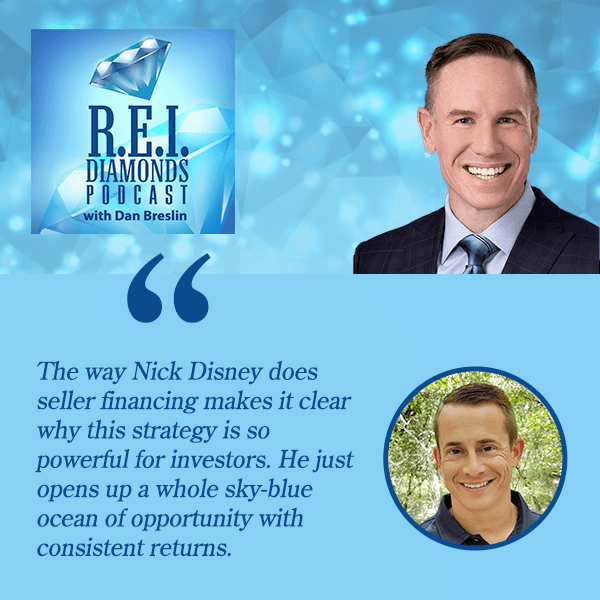
I’m a single-family real estate investor in San Antonio, Texas. That’s 99% of our business. We started buying, wholesaling, and some flips. We started building the rental portfolio. Now it has transitioned into buying, rehabbing, and selling with owner finance. We want to sell the property and create a promissory note, which is our preferred method to produce long-term cashflow. We create notes. We keep some of them, and we sell some of those notes to other folks who want to buy the payment stream on the back end.
Business Models And Mortgage Lending Laws
I have a friend. He was a guest on the show five years ago, maybe before he even started doing this. Dan Sadowski. He’s out of Delaware. A lot of locals in Philly probably know the name. He put this business model together and never took his course, never went to his networking event or the little seminars he did. He’s moved on to developing resorts or something like that at this point.
The basis of his strategy seemed sound to me. I’m like, that would be great. Sell it off and hold the note. Here’s where I always got stumped. I’m hoping you can get this cleared off the table right from the beginning, the mortgage lending laws. Selling it on, and I held paper on two deals, had to foreclose on both of them and got a pretty big payout in terms of the size of the loan from bailouts. It was foreclosure bailout grants they got.
I’m like, that was enough. I’m not even going to bother chasing them for the other $5,000 or whatever. If they call one day, I’ll give them a payoff and release it. If not, it is what it is. The thing that had me worried that I would lose sleep at night is I don’t want to violate federal mortgage laws by creating too many notes. Maybe you have some insight on what those guidelines are and maybe how you could get around that.
They do change, like your national law, and there are some state laws. The biggest key that I would tell anybody to get started is we run everything through an RMLO, residential mortgage loan originator. We have one, and I’m sure there’s one local to wherever you’re at. They specialize in creating seller finance notes. They’re all licensed, and they know all of the rules, and they are very good at helping you follow all the rules. If you follow all the rules, document everything appropriately, and operate your business as you should operate it, it has not been an issue for us at all.
Seller finance is probably more popular in Texas than almost any other state. Some people do it all over. Creating too many hasn’t been a problem. Where people have run into problems is when they were doing different than directly selling it. If we sell a house, you buy it. We’re going to have a mortgage note, deed of trust, we’re going to give you the deed. You own it. We don’t do lease options.
We don’t do rent-to-own. We don’t do any of those types of creative strategies. Not to say that there’s anything wrong with it. We directly sell them, and then we’re collecting a principal and interest payment. I would not let that deter you or any of you from doing it. If that’s what they want to do, make sure that you have the right people watching out for you.
You Google RMLO mortgage loan. Are they servicing companies, Nick?
Those are not the servicing companies. A residential mortgage loan originator, any bank that you went and got a loan from is going to have an RMLO in there. You just didn’t know that’s what it is. This company, if we take ours, for example. We’re going to sell this house to Jimmy. He’s going to buy it. We’re going to put together his file and his paperwork.
There are certain things that you have to document. We have to have a sales contract. We have to have proof of income. We have to have tax returns, bank statements, all these things that will go in there. They will run them. They will show their ability to repay. They will also create our disclosures. Anybody that’s ever got a mortgage, you’ll get your initial disclosures that you have to sign. You’ll have final disclosures that you have to sign later.
They will produce all those for us and make sure that everything is done appropriately, that we have correct debt to income for our borrowers, and that we don’t go outside of any of the rules. There are also certain timelines you have to follow. You can’t send the final disclosures ten minutes before they close. Most of them would be honest mistakes, but they would help protect you and make sure you do things the right way. That is where I would tell people to start. If there’s anybody in your local area that’s doing a lot of owner finance, they probably have somebody that they could refer you to.
It’s interesting. I didn’t know they existed, and I didn’t do all this stuff. There were some loans where you could do one loan, but if you did more than one loan, you got in trouble. Does that mean if I did that, and I did the paperwork on my own and didn’t get all the disclosures and everything, I did one, I’m okay? If I started doing 5 or 10 of them, I’m not. You’re not a lawyer, right?
We’re not, but I could give you the general idea. It also depends on who you do that loan to. I’m an investor. If you did a loan to me, you could probably write about anything you wanted in there. Most of ours are owner-occupants. There is a different set of rules there for the owner-occupant. They’re meant to protect families, protect against predatory lending, and things like that. I would check with your attorney, but it was 3 or more in a 12-month year. If you did 1 or 2, it was no problem. You still would want to follow the rules.
Once you did that third, you fell into a different set of rules, and it would impact things like, we don’t do balloon payments, but putting balloon payments in, and then terms. There’s another set of rules you’d want to make sure that you follow. My advice, it’s not that hard to do it right from the first one if you’re going to do it. Start the right way with the first one. That way, if you got to more than the limit, you’d still be okay.
Breaking Down A Recent Real Estate Deal
For the sake of a linear conversation, let’s go through an example. Maybe it’s a real one that you did in the last six months, like purchase price, rehab. Let’s go through all the numbers, and all the details, and then we’ll talk about the sale. Who’s the buyer avatar on that actual deal? Was there an application process, down payment, etc.? If we could start with the numbers of the deal, buy, rehab, renovate, and then go through the rest of the transaction to give the audience an example.
For sure. I think it’s a great idea. We’re in San Antonio, so that is a lower price point market in general if you’re looking at the US. One that we are closing, we bought it for $90,000. It needed some work, so we bought it for $90,000. We had to put in right about $25,000, but for the sake of round numbers, let’s call it $25,000. You’ve got $115,000 in this property. This is in an area where we have owner-financed a lot. That’s typically a blue-collar neighborhood. We have a good quality product. They’re safe neighborhoods. They may not be the fanciest neighborhoods, but we sold the property.
We have it under contract for $165,000. The borrower is bringing $25,000 total. That’s not just a $25,000 down payment. That $25,000 includes his down payment and closing costs, and we do have everybody prepay escrows, so taxes and insurance. That’s a total $25,000 financial commitment from the person who wants to buy the house. We’re going to finance it for 30 years. We had it rehabbed.
We have a sales guy. He was showing the property. Most of them we don’t sell on the MLS. We’re typically going to have signs in the yard, Facebook Marketplace, and some in our network. Reached out, and wants to own a home. Got a good job. The guy makes good money. He saved $25,000, which is not the easiest thing in the world to do, but he is a contractor. He doesn’t have traditional paycheck stubs.
He doesn’t have probably the greatest documentation of his financial history, but he’s worked for a long time as a contractor, and he makes good money, and he can show that he makes his money consistently over a long period of time. When you start to put all that together, we still have the same state sales contract. We still have the same owner finance addendum.
We’re still going to collect everything to document that he does make this much money and can repay it. Once we take that, we will send all that to the RMLO, and they’re going to say, we need this, we need his IDs, we need any bank statements, any tax returns, any financial documentation we can use. They will send us back a report, “Mr. So-and-so, we’ve got his report back.” We show his debt-to-income looks good. I remember because I looked at it, I think the previous day, it’s like 14%.
Here’s one of the key factors that we focus on owner finance. It doesn’t mean this person has bad credit. It doesn’t mean that at all, but it could very well mean that they have no credit. This gentleman paid cash for his truck. He has two of them. He paid cash for both of them. He has no credit cards. He’s never had a credit card. He doesn’t use our US financial system the way a lot of people do. There’s not a lot of credit history. His credit score is not good, but it’s not because of negatives, it’s because it doesn’t exist. He has no other fixed debt than our mortgage and no other fixed set payments. His DTI is low.
If you follow all the rules, document everything properly, and run your business the right way, seller financing is a solid strategy.
Someone like that has a lot of success in our model of consistently making their payment. They get to own a home, and we get the cash flow. We approved him, and the RMLO will send the initial disclosures. For folks that don’t know, the initial disclosures are breaking down, it’s like his closing disclosure, what his payment’s going to look like over time, and what his estimated closing costs are going to be. He signed those. We’ve got him set up with a closing date at the title company. We do have everybody close with the title even if they don’t want to. I do recommend it. It’s a better process.
It helps protect them and you. Three days before, he’ll get his final disclosures, which will have his final numbers of exactly what all his costs are. We’ll close him at the title company. One thing that we do is we do always use a third-party note servicer. That’s the person who will collect the payments, and he’ll make his payments directly to them. They will then send us the principal and interest portion of it. We do require everybody to escrow, so they will hold the escrow accounts for taxes and insurance, and make sure they’re paid out at the end of the year, similar to the mortgage that anyone else has had.
What kind of an interest rate does he have on this one?
We’re typically at 10.9%.
Is that a legal limit based on something, or you’re allowed to select the interest rate?
We are allowed to select it up to a certain point. The limit is somewhere around probably 18% or 19%. We don’t need to go that high. We wouldn’t go that high. Even if you could charge it, I’m telling you it would be a bad idea because you’re going to set that person up for failure. You’re going to create more headaches, and that’s not our business model. At 10.9%, we do make a good return, but it also allows them to make their payment. We’re trying to set up long-term payments where they pay every month, 15 or 30 years, and we’ll make plenty of money like that. We don’t need to charge them a ridiculous interest rate.
What is the payment roughly?
Principal and interest are going to be right around $1,420 a month.
Are you typically selling to this client? There’s a sign on the loan that says, buy this home for $1,420 a month. Is this a payment-driven transaction for him, or is it price, or maybe most of them?
We can’t put the actual payment on the sign. You can’t say, “For this much.” Typically, our person who buys a house, their financial concerns are how much is the down payment. We do charge more than typical in our business, but we have a lower default rate as well. They want to know that, and then they want to know what their monthly payment is. That’s typically where they’re driven.
After that, the actual sales price of the house is usually a third question. That’s their concern most of the time. If we can keep that principal and interest similar to what the rents are around there, it makes a lot of sense to them. They will have taxes and insurance on top of that, but they can see that they own the home. Down payment, monthly payment, and opportunity to own a home is probably the biggest driver.
Are you not allowed to put the down payment and the monthly payment in your Facebook ads? It’s not allowed to go on the sign.
You can’t put in the monthly payment. You can’t say what the monthly payment is, and that it would vary anyway. You can advertise the down payment that you’re asking for. That will typically be in our ads. $25,000 down is pretty much our standard. That varies. We can run our business, but it’s not uncommon that we get $30,000 or $35,000 that people bring to the table.
Out of the $25,000, are we talking about $5,000 or $10,000 for prepaid escrow and the closing costs?
It will vary depending on the time of year, but you’re probably $7,500. $7,500 is going to go to closing costs and their prepaid escrows because they’re going to fund taxes, which are probably taxes a little higher in some other places. They’re going to fund the interest and then their closing costs.
You got $17,500 coming out of your $165,000 purchase price. You don’t have to typically pay an agent because you’re selling them directly.
We have a guy that works for us, so we do pay him per house. We’re not selling 3% for our agent, 3% for theirs.
We’ll keep the commissions out of the math for the sake of the example. $147,500 is the note, and he’s paying $1,420 a month. You have this principal balance of $147,500 that’s written to produce 10% interest. That alone is pretty good, but now let’s talk about how you’re financing that stack. Is Nick Disney got $140,000? You’re in there for $115,000, so you got some upside in the profit there. Are you leaving that $90,000, $100,000, or $110,000 in your own cash in the deal, or are you now selling that off? What’s the exit to maybe clean up your books and get to the final profit on this deal?
It’s a combination. We do sell a lot of them. This one we will sell because I already have someone that wants to buy it. If they buy it, we sell ours at an unpaid principal balance. If it’s $147,500, that’s the purchase price, $147,500.
Will it have to be seasoned for six months before that person steps in, or your brand is strong enough with this buyer? We’re like, “Give me the 10.9%.”
That’s exactly what it is. It’s the relationship. It’s not the first note that he’s bought. It’s the relationship and the product that you put out. He’ll buy it right after.
If you help someone and ensure they don’t lose money, they will tell everyone you did right by them, and that will help your business in the long run.
We’re talking about a 10% down mortgage for this buyer. I don’t feel like it’s unreasonable to pay 10.9% based on the risk profile. The borrower has no credit history. They can’t go get a 6.5% or 7% mortgage that’s out there in the market now. They’re only putting 10% down. There’s no PMI. It’s a good deal. It’s a fair deal.
I believe it is.
How many of these notes have you originated and sold? Do you know, Nick?
I don’t. It’s in the hundreds. It’s somewhere in there.
Do you know if any of those have defaulted?
Absolutely. There is no perfect system. We’re good. We have an incredibly low default rate. We may have 1 or 2 a year. We’ve learned a lot over a long period of time. When I say we don’t do bad credit, because if you do, you’re going to have more defaults. Someone who brings had to save $25,000, worked hard to save that most of the time. It’s not easy for a person to do. They’re committed, but things happen. We’ll do that. We rarely have one default out of the gate. If we do that, then we’ll remedy that for the investor because that’s also part of the relationship.
What do you mean by remedy? Is it working it out with the buyer, some combination?
It’s usually a combination. We’ll always work it out. If Dan bought the note, “Nick, I didn’t get paid.” That’s not good. One, “We have to get your permission, but we’ll reach out on your behalf.” We’ve already met them. We’ll talk to them, and see if we can get it worked out. If we can’t, and it’s right out of the gate, typically we say, “That’s our fault. How about I give you another one? We trade it out.” I can give you one and buy back the problem. If I buy back the problem from you, then you won’t have any problems. You go tell everybody that I’m a great guy and I fixed them all. It does work out for both of us. It’s easy for us to fix it.
Is that a written guarantee for your investor at all?
There’s no way to write it. There’s no way for me to write it in there.
Not legally, right?
No. I asked about it. Other people have asked me about it, which is why I asked the attorney about it. It’s not, but you’ve been doing this a long time, if you help someone and you make sure that they don’t lose any money, they will go tell everybody else that you made sure. It’s going to help your business in the long run. It’s much easier for us to fix the issue with a note than most other people because that’s our whole business model. We’re doing it every day. We put it right back in the system.
That’s the other thing. It’s like if I’m sitting here in Chicago and I buy this note in San Antonio and then it goes bad, I’m like, “I’m now hunting around for the foreclosure attorney. I’m figuring out how to get it back through the sheriff’s sale or whatever it is that goes on there.” It’s fast in Texas. The laws are favorable for lenders in Texas.
It makes sense to have notes that are in Texas, is probably part of the reason why an at-par $147,500 note can transact, is because there’s a certain security that comes with being in Texas, with the way the laws work there. If it’s torn up at all and needs another paint job, it’s like I’m sitting here in Chicago having to figure out who can paint my house, who can put the lockbox on there, who can come in and fix the broken pipe or whatever else is going on.
Handling Defaulted Notes And Foreclosure Strategies
That sounds like a big nightmare, but at least some verbal willingness to jump in there and swap that out on your behalf would make me feel a little better about plunging in and earning my 10.9%. If a note goes bad, what’s your action item? Are you making an attempt for cash for keys? The backup plan is like taking it to the courthouse steps.
Rarely do we have to go to the courthouse steps. The first thing that we do, whether it’s my note or somebody else is we will contact them. We make everyone come to the office. They have to sit down with us if they want to buy a house from us. One, we get an interview in person, but two, they know us. If we call, they know who’s calling. They know there’s a problem even if we sell it. It does help. We will go talk to them. We’ll knock on the door.
Most of the time, if it’s one payment, the conversation is, “I’m sorry. We didn’t have as much work. I’ll make two payments next month.” It’s not a problem. You get the same amount of money. If they can’t and they can’t make it up and it has to go through, I don’t go down and do the foreclosure. I will give anybody our foreclosure attorney. I’m going to send them an email.
He’s going to start the process, and then if it goes all the way and they don’t catch up, which is very rare, he’s going to send a second email saying, “What’s the opening bid from the lender,” which, if you own the note, you would have your opening bid, what you feel like your costs are. The foreclosure is pretty simple and straightforward in Texas. Again, we do everything we can to try to avoid that. It’s fewer headaches, and it’s a lot smoother.
Do you know how many have made it to that extreme end of the process?
When I first started, more. They were my notes because I made a fair amount of mistakes. I don’t know the number. It’s less than that have gone all the way to foreclosure. It’s less than twenty. It’s not many.
Out of 100, 200, or 300?
A bank won’t just give you money for any note. You need an established relationship with them, and they need to understand real estate.
It’s more than 300. I don’t know. 400 or 500. Very low. You have to follow the process because if you don’t and you just Wild West it, you’re going to give yourself headaches.
I cringe at the thought of trying to duplicate this system. I’ve been in foreclosure in Chicago and the Philadelphia region. We have a judicial system, which means there’s a 1-to-3-year court process before you get a judgment. The judgment then goes to the sheriff’s sale to be scheduled. That could take anywhere from 1 to 6 months to get to the step. You’re talking, it’s three years. You’re like, I’m over here having to pay property taxes to protect my mortgage for two years.
We don’t have that.
I cringe at picking the wrong state and not having somebody who’s a third party handling that stuff. It’s good that you have the volume there. 20 out of 500, it’s probably a 2% or 3% default rate in the whole country. That’s probably about average with Fannie Mae, Freddie Mac, and conventional mortgages, we’re probably in the 2% to 4% range anytime. If the market’s in a state of crashing, we’re probably 3% to 6% or higher. When we came through 2008, 2009, and 2010, recently, if I had to guess, and I haven’t checked in like 6 to 9 months, I think we’re at a 2% to 3% default rate. That default rate wasn’t that they made it all the way through the process, that was foreclosure filings that I was tracking.
Those were the default rates on that. Your model is to cycle the cash back out. You’ve made $17,500. It’s flipping a house without the cost of the real estate agent. You’ve chiseled down that expense to whatever it is you’re paying your internal sales guy. You’re all in for $115,000. Your net profits are a clean $40,000 to $50,000 on a deal like this. Do you think if you took it to the open market, it would have been more like, “We’ll give you $155,000 with a $5,000 assist?” Are you able to get a market value without quite as hard of a negotiation, maybe, if you were to go to market?
We sell ours at market value. We’ll run comps. We sell them at value, and so we don’t get a lot of pushback on the price, so we’re getting that. We do have a couple extra steps, but we do control more of the steps, and it’s more predictable in our model, and we have fewer people as far as the buyer, buyer’s agent, other issues coming through, so it does allow us to be very smooth. We’re pretty dialed in our buy, rehab, sell, and then either sell the note or there are other options. Sometimes we’ll refinance. You can refinance a note like you can a house as well, so that’s something that more people should do.
How Refinancing Strategies Unlock Investment Potential
Let’s go on that thread then. We ran through the example of selling the note and getting your cash back out, so how does the refinance work?
It’s going to work very similar to the way you’d refinance a rental property. I relate to that because many people have done that, but you’re not refinancing the property because you don’t own it. What you own, or what you have is this note and deed of trust. You have this income stream or a note receivable. You can take that and pledge that as your collateral to the bank. You are not going to walk into any old bank and do this.
It’s not going to happen. One, you probably need to have an established relationship with them. They don’t tend to open this up to anyone, and they’re typically going to be one of your local banks that understands real estate, and you’ve built a relationship with them. Once you have done that, if you have this note, you can go in and refinance it very similar to the way you would refinance a rental property, and you’ll pull back a bunch of that capital.
Let’s say Dan had a good deal and went through our entire process. He’s $115,000 in, but he has a note, and he can refinance and get most of his $115,000 back out, then he doesn’t have nearly as much money left in this deal, but he still is collecting the payment. He has a payment to make to his bank for his cash-out refi on the note.
Is there a small spread there? What do you think about a note you know was refinanced in the last six months? What was the interest they were paying to the bank?
7.5%.
You’re making the 7.5% to the 10.9%, so a 3% spread on the interest. That’s the goal. Is that the standard?
It would be hard to say that’s the standard because it varies. I don’t even know if there is a standard. What worked for us, especially when money was a little cheaper and interest rates would go down, is if we had a 30-year at 10.9%, and so this payment is X, and we would go back and get a 10 or a 15 from the bank at a little bit lower interest rate. If you could wash those out, you would give up those first few payments, but you have all of your money back.
You get all your money back, and you still have, even if the payment, the cashflow is not very much, once you pay off because the one you get is going to be shorter, it’s not going to be a 30-year note, it’s going to be a shorter note, you have, if it’s 10 or 20 years of gravy, or 15 years of gravy left over. That allowed for growth because we were using the same capital more than once.
At that point in time, was it more advantageous for you to not ever sell off any notes? It almost feels like it would be. Why bother with the headache of having to guarantee verbally these notes and deal with investor calls when the payments stop? Why bother with all that headache? Why not refinance every one of them?
It is because they do two different things. When you refinance them out, you’re hanging on to them, and it is simpler and saves some steps, and you’ll get those back-end payments, which is great. When you sell them, you’re getting cash in your business, and any business that needs to recoup capital and put cash in, because you’re still going to have other expenses, and so, when you sell them, you’re putting cash back in, and when you’re hanging on to them, you’re creating long-term cashflow.
You’re leaving some of that cash every time you refi in the deal, in a sense.
Typically, you are.
How much? Is it $10,000 or $20,000 on each one? What is it, a $115,000 note, what are they going to give you on the refi?
We’ll use that one as an example. $103,000, $250,000, so there, you’re leaving $12,000 in it. Some are less. When you have a good deal, those are the great ones to refi because then you can get all your money out. Say we had bought that $10,000 or $12,000 less, then you get all of your money back out and you don’t have anything left in, those are great to refi. Your business needs capital, you have people to pay, and it’s a balance of the long-term and the short-term win, and the business needs both. That’s why we would use both.
Know what your goal is. Assess whether the product you buy truly accomplishes what you’re trying to do.
Is that $103,000, $250,000, that’s not based on the principal balance of the note? It must be based on either a desktop or drive-by or an actual appraisal of the property, and then an LTV from there. Is that the metric the bank is using?
Exactly. It typically won’t be a full appraisal, it’ll typically be a drive-by. It depends on the bank, but typically, we were at 70%. It’ll be 70% of the appraisal value or the unpaid principal balance, whichever is lower. They’re going to take the lower number and they’re going to give you 70% of that.
Seventy percent of the unpaid balance?
Right. They would do an appraisal on the property, it’s going to come in at $165,000. You could refi up to 70% of the $165,000, up to the unpaid principal balance. They’re not going to give you more than what the commissary note is.
The other one was 70% and it was the lower number. What was the lower number, you said?
The lower number that I said?
I don’t know, I may have missed it. My mind is blown because I’m like, it can’t be refi notes. How many of these could I get? I’m going to fly down to Texas and see this banker so I can set up a few million dollars worth of these.
I know some people who have them, and some banks will do millions. It’s in the cards for you.
You said 70% of the appraised value. If that $165,000 example, I’ll do the math, times 0.7, that’s $115,000 they’ll give you on that loan.
They would give you that, but they won’t give you more than what the unpaid principal balance is, so whichever one is less.
On that one, he owes us $147,000. If I bought the note for $147,000, I’d be getting $115,500 back. $147,500. I would have $32,000 in the deal in that instance.
In that instance, you would.
In those instances, I get it. That makes sense why you would sell because how many of these $32,000 long-term 30-year investments do you want to have sitting there as a business owner? I get it in that instance. Are there times when someone instead, I imagine San Antonio houses had a little appreciation over the last couple of years, you bought two years ago, there’s a little bit of mortgage paydown, but the house traded at $135,000 two years ago, and now it’s at $155,000 or $160,000. It made sense to season your note for a year or two before you do the refi. Is that maybe a strategy too?
It’s a pretty good strategy. I’ve never thought about it. We never used it like that. It makes a lot of sense. You can do that. It’s always easier if you don’t have the reputation or relationships, to season your note for a few years because if you want to sell it or refi it, you’re going to get a higher appraisal. If you go to sell it and somebody, you can show a good pay history, “This guy’s never missed a payment in two years.” That shows a lot of confidence. You’ll probably get a higher value for selling a longer-seasoned note. There are always reasons to hang on to them.
If you’re a business owner and you’re continually turning, then to your point, sometimes you’re not going to want to leave that money in there. The majority of people who buy notes are not full-time real estate investors who are actively investing. They understand real estate. They like it. They want the cash flow, and they don’t want the headache of, say, rentals or running a business. For them, they’re like, “I want to put this here, and I want to get paid every month.” They’re not running the business that you’re running. They have different goals.
It makes sense. There are two ways that anyone reading could go about it. People are doing this as a business model. I know someone in Minneapolis doing this exact business model. I’m looking from the outside. I know he has a few bucks in the bank. He might be keeping the money in there. He’s probably got this refi thing set up. There’s no way I’m going to hold paper on a flip house and then hold paper and then wait for the money. I thought that’s what he was doing. No way. If you can refinance back out and set them up for the long term, it starts to make a lot more sense how something like that would scale.
The audience could do this type of deal in the strategy on their own and flip the house, set up the note, and work a business model that way. Maybe someone has 5 or 10 rental properties, or maybe even more. It’s feeling the way that I am and probably the other clients, where it’s like the tenants and the toilets and the eviction going on. It’s like, I’ve lost quite a lot of sleep from rental properties over the past seven years since I started buying them and owning them. I’m whittling them down as we speak for that reason.
A note that’s paying is set up properly with the RMLO in place and the servicer in place. I didn’t have either of those on any of the notes that I’ve done. I can see the attraction for a more passive real estate investment. At 10.9%, if it’s 6.5%, it doesn’t seem worth the effort. At 10.9%, you’re starting to get into the, “Maybe it’s worth the effort to figure this out.”
At 10.9%, if it’s passive and it’s written down, and it’s people that transition from rentals to buying notes are typically doing because it’s passive, they don’t have to do anything. They like real estate in general, and they get to keep it as collateral. It’s very predictable. We don’t have the swings, let’s say the up and down that you see in a stock market. It’s 10.9%. That’s what it is. It’s very predictable. For people who want that, it’s a great fit. If you’re looking for something else, then there’s probably something else that’s a better fit.
Investor Journeys: Transitioning From Rentals To Notes
Are there any avatars that you have, where they were in the rental business, and you guys connected a few years ago, and now they’re transitioned and they’re doing mortgage notes? Maybe you could, without naming names, tell the story a little bit.
I have several, but one that comes to mind, he’d owned several rental properties. I think he still has one. He was also a short-term private lender for us for a long time. He’s a great guy. He saw what we were doing, but he was committed for the longest time, me and him. He sold a rental, and he’s like, “I want one of these notes.” I’m like, “We built you one.” He kept them, and then he’d sell one every other year. We’ve probably worked with him for 10 or 12 years now. I think he’s got one left, and he’s like, “I don’t ever want anything else. Give me these notes. Let me get paid, and I’m going to travel.” That’s his vision.
Build the best relationships you can now, and take care of them. Then, the money will take care of itself.
That’s what he wants to do. It’s a win-win. A lot of people will also do a combination, using the rentals for the equity, and they’re easy to leverage in comparison. Owning the notes, if you have liquid, especially if you’re further on for the pure cashflow because they’re going to give you more cash flow, and it’s more predictable. Sometimes having that balance, we see that a lot. A lot of people have a lot of success. That’s our business model. We have a balance of having both and using each one for what they do well, and not trying to make a rental be your primary cash flow driver when something else might be better.
What do you think about someone’s got twenty rental properties? If you had twenty rental properties, and you weren’t sitting in your seat, but you were in my seat, let’s say having the conversation with you, what would be the balance? Is it done in a dollar amount? Not a number of properties. 50-50, 60-40. You love them. Maybe yours is like, “I’d be like 100% and get rid of all 20.” I don’t know.
I think as I’m transitioning, I’m probably getting more. I don’t know that I’d get rid of them all at once, but the conversation that I often have with people is, what’s your goal or what’s your number? Let’s say our average note pays $1,500 a month. If your cashflow number is $6,000 a month, and then that pays all your bills, we’ll use easy math here, then getting to the first four notes is huge because you can see then the advantage of having $1,500 a month times four. You’ve got your $6,000 on 30-year notes, depending on where you’re at.
If that was covered for the next 30 years, that was all your bills. You get a lot of freedom. For each person, that number is going to be different. That is a way that I would encourage someone to look at it, because they might be like, “I want to hang onto these rentals, but I also want to have the protection of this cash flow. Maybe I sell 3, 6, 8 and keep the others. What could I turn that for long-term cash flow?” That is how I would look at it. For me, you’re correct. I’ll sell them off as I go along, turn them into notes, and then do whatever I feel like doing.
The only thing that probably is unsettling to the person with the twenty rentals is the twenty rentals are hopefully staying at least at their current value and producing the rent, the return. They come with the chiseling away of the turnover expenses and the repairs. That has to be accounted for. The growing taxes on the properties are going to chisel away at the cashflow. You have a lot of things eating at your principal balance in a rental portfolio as time goes on.
Ideally, your equity spread grows. You have a larger pile with rental properties, but you do have the monthly payment chiseling away at your principal balance. That might be the only other negative side of the coin, which would be seeing the principal balances go down. Hopefully, you have another method of running your business or running your life, where you’re able to continue to replenish the note supply as it were.
You’re right, but they’re amortized like any other loan. It’s also not like you get that first $1,500 payment, and the balance went down by $1,500. You get a $1,500 payment, and the balance goes down by $7 or something because all that interest is paid upfront. I would, to your point, encourage people to maybe save some of that so they can buy another one, and then you can have it replenish itself and make it last an incredibly long time.
Aligning Investments With Your Financial Goals
I love it. What are the things that I maybe forget to ask, that are probably pertinent for the audience?
I think for the audience, step back and know what your goal is, and whatever product you’re going to buy. If it’s rentals, flips, owner finance, self-storage, or commercial, does it truly accomplish what you’re trying to do? It is because I have made those mistakes. You buy certain things, and they’re not going to give you, reach your goals. I think if they know that, then they should, at a minimum, learn about notes.
It’s much easier to own them than typically people think. If you have capital, you can buy one tomorrow. Know what that is. How would that balance your portfolio? If it would add to it, I would encourage you to look at it. From my experience, the notes are typically more cashflow that’s more predictable. Balance that with what your goals are. Everybody’s got to set the best thing for them.
Must-Read Books For Real Estate Success
I love it. Are there 1 or 2 book recommendations you would have that have been impactful in your fifteen-year real estate career?
Eat That Frog has helped me a lot. I’d like to use it. Rich Dad Poor Dad was where I got my start, like any of us. Eat That Frog, the idea is to do the hardest thing first and get it out of the way. Makes everything else easier to do. It’s very short. It’s very easy to read. I still say it to myself. I like that one for anybody else. That’s the one that stands out.
Crown Jewel Of Wisdom For Investors
Crown Jewel of Wisdom. You’ve been at it for fifteen years, which is a setup because you’ve already talked about transitioning. If you were going to go back and tell yourself what the Crown Jewel of Wisdom is, knowing everything you know now, back fifteen years ago when you were first starting into business, what would that be?
Build the best relationships you can now and take care of them. The money will take care of itself. Now that I’ve done this long enough, I’ve had relationships for years and years and years. They may not have made a lot of money upfront, or maybe you didn’t maximize every single dollar out of the gate, but building the relationships with the right people, both of you will make so much more over the long term. That’s what I would go back on day one and focus on. I think it’d be great for anybody getting started.
Before I ask my final questions, is there somewhere they can go to get more Nick Disney?
You can find me on Instagram, @RealEstate_Nick1, we put a lot of content on there. Feel free to reach out to me, or send me an email. I love to connect with people. If we can work together, if I can help you, if you can help me, whatever it is, [email protected]. I like to talk to people. I love real estate. If we can connect and do something, I’m happy to do it.
Reflecting On Acts Of Kindness
My final question is, what is the kindest thing anyone has ever done for you?
Real estate-related or in general?
You answer how you want.
I’m going to keep it real estate-related, so you don’t pull up my heartstrings here. When I started, there was this guy, I had no money, and no one would lend me any money. He lent me money on these deals, which he probably shouldn’t have, I probably wouldn’t have. It allowed me to get started on several of these initial deals. As you know, getting through those first few is such a game-changer. Knowing that you can do it, it doesn’t matter how much money you make. Without him taking a chance on me, because he believed that I could do it for whatever reason, I’m super thankful. He was super kind, and it was something they didn’t have to do. It made a huge impact on me.
I could answer with a very similar situation early on myself. I get that. I remember he gave me a $10,000 construction draw, my first lender. My credit was terrible. The scenario, I wouldn’t have lent myself. He gave me the $10,000. I’m like, “$10,000, this is amazing.” He’s still a business partner to this day. I guess he made the right choice, and I paid him back his money with interest.
There you go.
Nick, I had a blast. I got pages of notes. My mind is blown. I can’t believe that you can refi these notes. This opens up a whole sky-blue ocean out here of a new asset class in my mind. I appreciate you reaching out and getting us connected here so that we could have the show.
Thanks for having me. I enjoyed it. Let’s stay in touch.
Important Links
- Nick Disney on LinkedIn
- Nick Disney on Instagram
- Sell My San Antonio House
- Eat That Frog! 21 Great Ways to Stop Procrastinating and Get More Done in Less Time
- Rich Dad Poor Dad: What the Rich Teach Their Kids About Money That the
- REI Line Of Credit
- Buying Mortgage Notes Generates 15% + Returns with Brian Lauchner
- Dave Van Horn on The Process of Investing in Notes
- 100+ Unit Apartment Syndication with Stephanie Walter

